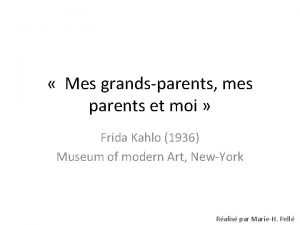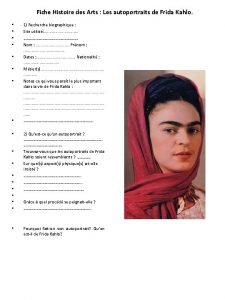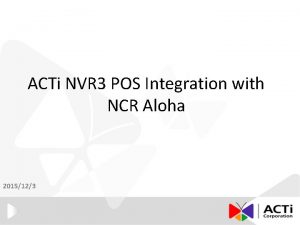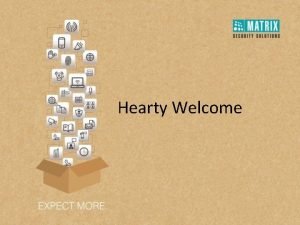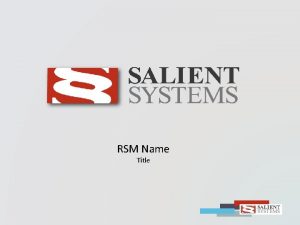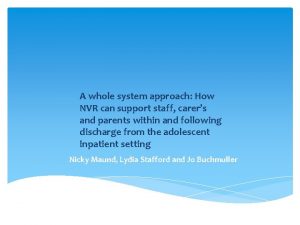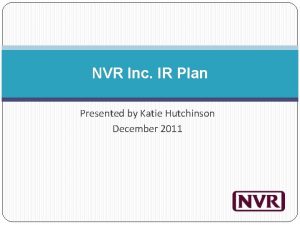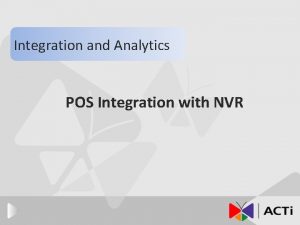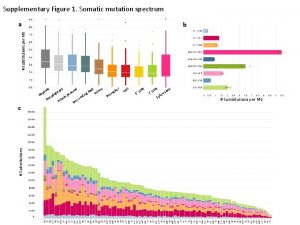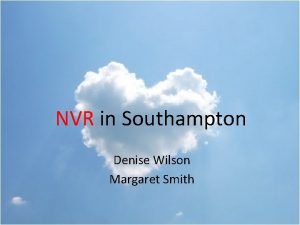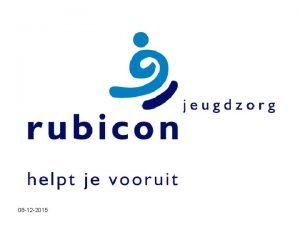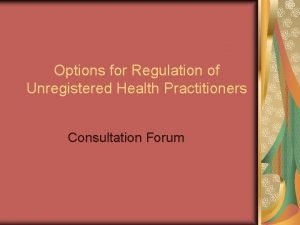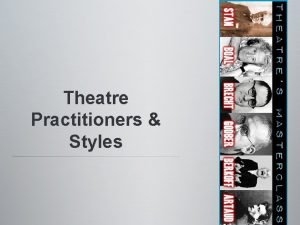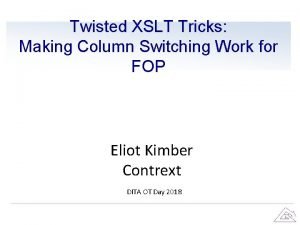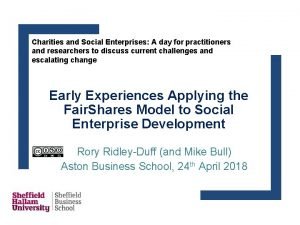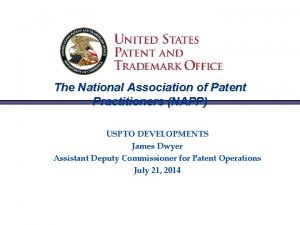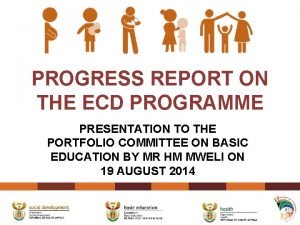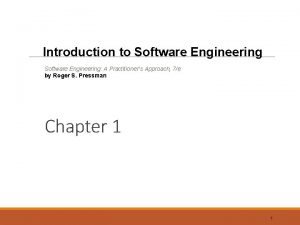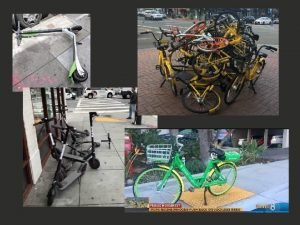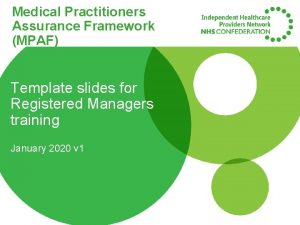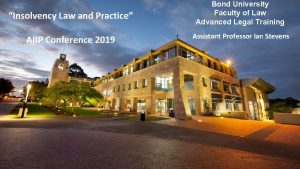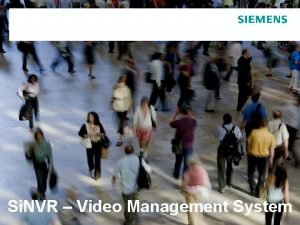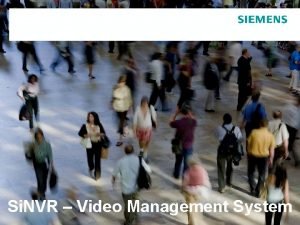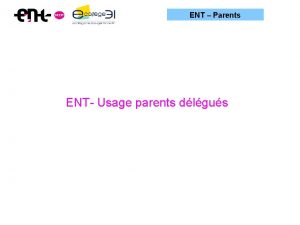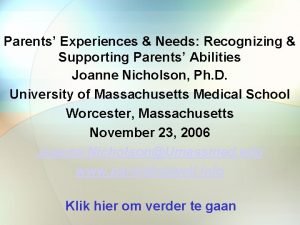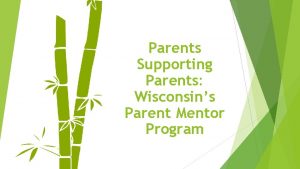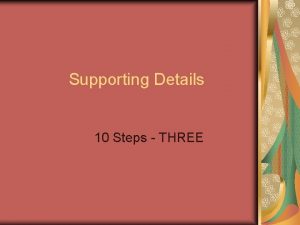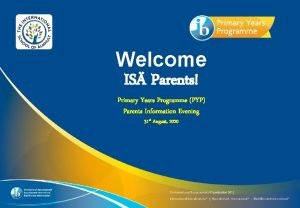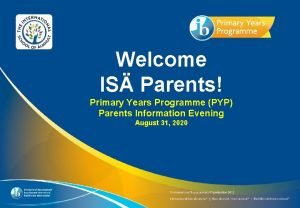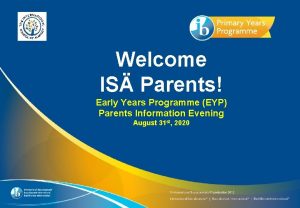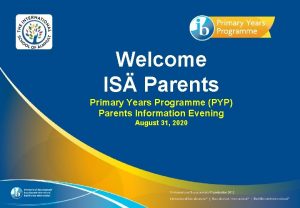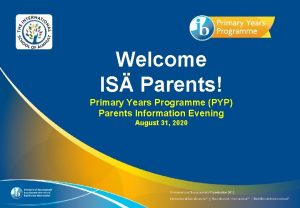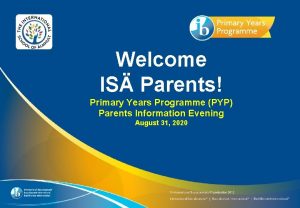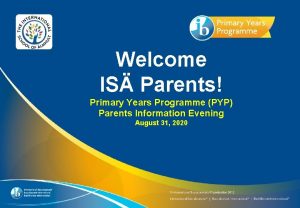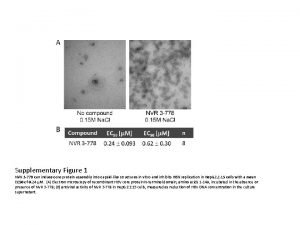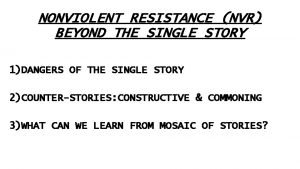Supporting Parents Practitioners with the NVR Programme Practitioners






































- Slides: 38

Supporting Parents & Practitioners with the NVR Programme – Practitioners Responses to an NVR Training Programme in Ireland. 4 th International Conference on Non Violent Resistance, Malmo, Sweden th th 26 – 27 May 2016 (edited version – images and cases removed) Dr Declan Coogan, Lecturer, MA in Social Work Programme; Research Fellow, UNESCO Child & Family Research Centre, NUI Galway.

Some stories/ narratives…. Share experiences of thinking about and working with child to parent violence and abuse and NVR Describe how we developed an NVR training programme for practitioners in Ireland as part of an action research project Provide a taste of the NVR Training Programme through quotes from practitioners who took part in and helped develop the training

Some stories/ narratives…. Provide one example of how we do NVR in Ireland – the meaning of support Think and talk about what these stories could mean for NVR in Ireland elsewhere.

Tuning In, Part 1…. . Who am I and where am I coming from?

Tuning In, Part 2. . . Please make small groups of two people. The answer you give to the questions below may be shared with all of us. Turn to the person next to you: What is your name? When did you first encounter NVR ideas? Tell us something about you.

A veil of silence surrounds child to parent violence (Hunter & Nixon 2012; Coogan & Lauster, 2015) Some examples of child to parent violence and abuse https: //www. youtube. com/watch? v=F 9 nm. Zbv. Ivu. M

Fear & the abuse of power… Difference between childhood testing of boundaries and child to parent violence and abuse…? The issue of power makes the difference. Child to parent violence and abuse is an abuse of power through which the child or adolescent attempts to coerce, control or dominate others in the family. See Tew and Nixon 2010 & Coogan 2011, 2016

Child to Parent Violence and Abuse - Case Example. Case example not available on hand-outs

Dilemmas about child-to-parent violence and abuse Difficult to find a service - no one has an explicit mandate to work with child to parent violence and abuse. Difficult to know what best to do and where to focus intervention. Difficult to see that a child can be both a victim and a perpetrator of abuse. Diagnostic labels (e. g. ADHD; “attachment disorder”) can make it difficult for us to see the whole picture about family conflict and abuse.

Family Characteristics? Research is at very early stages of development. Research findings on child to parent violence and abuse should be treated with caution – could be easily misunderstood

Where do we see CPVA? Note of caution then, but current research suggests that CPVA occurs with Mothers parenting alone following exit from domestic violence. Two parent families – often well educated and middle class – with “over entitled” children Some families develop habits of aggressive interaction & withdrawal between parents & children which can lead to violence and abuse. (Gallagher 2004, 2008; Omer, 2004, 2011; Coogan, 2011, 2012, 2015; Coogan & Lauster, 2015).

Where do we see CPVA? In a wide range of countries, families and cultural contexts. (Pagani et al, 2009; Cottrell & Monk, 2004; Ibabe et al, 2013; Weinblatt & Omer, 2008; Wilcox et al 2015) Figures vary but some suggest CPV occurs 18% of two parent and 29% of one parent families in the US (Walsh & Krienert 2009)

Where do we see CPVA? In Spain, there are laws providing for a restraining order against adolescents, similar to that used for domestic violence (Calvete et al 2013) In the UK, practitioners in a range of services are increasingly looking for training and support for responding to child to parent violence and abuse (Condry & Miles, 2014; Wilcox et al 2015)

Where do we see CPVA? In Ireland, social workers and others working with families are increasingly encountering child to parent violence and abuse in their work and are asking for training to address this problem ( Mc. Mahon, 2013; O’ Rourke, 2014; Lauster et al, 2014) For Parentline, child to parent violence and abuse is the single largest reason for parents contacting the service ( O’ Reilly, 2016)

Review/ Preview Who are we and where are we coming from? What is child to parent violence and abuse? What is it like for parents/ carers, practitioners & researchers? Where do we see child to parent violence and abuse? Hope? How was an action research project on child to parent violence & non violent resistance developed? What does the research say about NVR in Ireland? How do we do NVR in Ireland – the voice of practitioners?

Doing and researching NVR in Ireland. . . An Action Research Study.

Title of Research ‘Intervention with Child to Parent Violence – An Exploration of Non Violent Resistance’ (Coogan, 2016) Questions based on dilemmas when working with parents and young people. Consultation with clinical team, families and with Omer in 2008 – hope emerges…. . Requests from practitioners for training & interest in research. Identified Research Supervisors (2010) Initial Literature Review. Ethical Approval from NUI Galway. Action Research - Development of 2 day pilot training on Non Violent Resistance for Practitioners.

Intervention with Child to Parent Violence – An Exploration of Non Violent Resistance. Further research & discussion in relation to action research & grounded theory methods. Development of NVR Training Programme for Practitioners. Liaison & consultation with management & staff. NVR training provided for Multi-disciplinary Family Support Service & for HSE Social Work Service in West of Ireland. Data collection (interviews and questionnaires) and analysis. Identification of findings.

Interviews took place AFTER participants had attended the NVR training and had time to use this training in their practice.

Research interviews – what did we talk about? Some of the questions we discussed were – How do you assess the nature & extent of child to parent violence and abuse? What are your impressions of the ethos of NVR? What are your experiences of discussing & implementing NVR? What supports do you need to implement NVR?

Practitioners impressions of the NVR ethos. “Actually I love the ethos behind the approach. In terms of that whole idea of attempting to empower parents to recover their authority, like their parental authority and seeing them as key agents of change. . . that would sit very easily with our own ethos as an organisation …. ” Sean, Centre 1, Vol.

Practitioners impressions of the NVR ethos. “I thought it was good in that I think that nonauthoritarian approach is more effective now…. Kate, Centre 6, Stat.

Practitioners impressions of the NVR ethos. “That was one of the main things that stood out for me about it, that it was more kind of co-operative and open and with dialogue ……. People feel more listened to you know” Kate, Centre 6, Stat.

Discussing & implementing NVR…? “Some parents are a lot more receptive than others. I think it very much depends where the family are at and if its just the controlling behaviour, that’s fine. But if you add in housing, fear of eviction, no money etc. , trying to use this approach with some families, they’re just not taking it because there is so much else going on for them. . . ” Ellen, Centre 3, Vol.

Discussing & implementing and implementing NVR…. “Positive really, in that they were at the end of their tether and they wanted something. . . Kate, Centre 6, Stat.

Discussing & implementing and implementing NVR…. “…. when you approach a family and say ‘ok, this is an approach that has worked before with children perpetrating violence in the home, this is what I’m going to use, this is what its about and we’re now going to do a couple of sessions on it’, it can be very re-assuring to parents that there’s a tool I suppose they can use”. Kate, Centre 6, Stat.

What did you like? “. . . the whole area of being non violent and non controlling. Ok? And I just think in life, it seeps in and whether we realise it or not, we can become, unknown to ourselves, very controlling in our behaviour”. Ellen, Centre 3, Vol.

What did you like? “The practical do-able approach to kind of calming the situation. . . I liked the ethos of it and the move away from unquestioned authority. That appealed to me and I liked the way it could be measured easily enough if you’re doing a few sessions”. Kate, Centre 6, Stat.

‘Doing’ the Non Violent Resistance Programme in Ireland - What does ‘Support’ mean? ‘Feeling held’

One example of ‘doing’ NVR in Ireland Case examples are not included in hand-outs.

Some the findings from research – what did we find out?

Intervention with Child to Parent Violence – An Exploration of Non Violent Resistance: what are some of the key findings? Child to parent violence and abuse is encountered by practitioners working with parents and children in a lot of different kinds of services in Ireland Practitioners in Ireland focus on the parentchild relationship and do not blame parents for the violence/ abuse of their child. “Support” : presence or absence of support determines whether & how the problem of child to parent violence and abuse is effectively addressed.

Intervention with Child to Parent Violence – An Exploration of Non Violent Resistance: what are some of the key findings? Positive responses to NVR training for practitioners Practitioners said the training supported them in their work to empower parents They said it is practical and evidence informed training that meets their needs and the needs of families. The self-efficacy questionnaires (developed as part of the research and validated as a research tool) demonstrates that the training is effective in increasing knowledge, skills and competence.

What might this mean for NVR in Ireland elsewhere? Child to parent violence and abuse takes place more often than we think Responding to child to parent violence and abuse is a complex process It requires the support of parents by practitioners and especially by members of their family and community. Practitioners adapt the ways they use NVR, depending on the needs of the parents and families Practitioners also require support from managers (training and supervision) and from peers (case discussion and encouragement)

Innovative responses to CPVA in Ireland (Wilcox et al, 2015). Practitioner responses to NVR training in Ireland: Overwhelmingly positive – NVR meets the need of workers and of families for a structured and short-term effective response to CPVA Different features of the model adapted by workers in response to client need. Group work: Ennis, Limerick; YODA Dublin. Individual work: Child & Family Services Dublin, Galway. National telephone parent support line – Parentline. Need for an NVR programme handbook and awareness raising and training for practitioners across Europe.

Thinking about what you’ve heard, what are your comments/ feelings/ questions? Please turn to the person next to you and discuss this question.

References Coogan, D & Lauster, E (2015) The Non Violent Resistance Handbook for Practitioners. Galway/ Brighton. The UNESCO Child and Family Research Centre, NUI Galway/ RCPV Project, University of Brighton, England. Coogan (2012) Marking the Boundaries – When troublesome becomes abusive and children cross the line in family violence. Feedback – Journal of the Family Therapy Association of Ireland. Summer 2012: 74 -86. Coogan, D (2011) Child to Parent Violence: Challenging Perspectives on Family Violence. Child Care in Practice. Vol. 17, No. 4: 347 -358. Condry, R & Miles, C (2014) Adolescent to parent violence – framing and mapping a hidden problem. Criminology and Criminal Justice. Vol 14, No. 3: 257 -275. Cottrell, B & Monk, P (2004) Adolescent to Parent Abuse: A Qualitative Overview of Common Themes. Journal of Family Issues. Vol. 25 No. 8: 10721095. Edenborough, M, Jackson, D, Mannix, J & Wilkes, L M (2008) Living in the red zone: the experience of child to mother violence. Child and Family Social Work. Vol: 13: 464 -473. Gallagher, E 2004 a Parents Victimised by their Children, Australia New Zealand Journal of Family Therapy (ANZJFT), Vol. 25, No 1: 1 -12.

References Gallagher, E 2004 b Youths who Victimise their parents. ANZJFT, Vol. 25, Vol. 2: 94105. Holt, A. (2009) Parent Abuse: Some Reflections on the Adequacy of a Youth Justice Response. Internet Journal of Criminology. http: //www. internetjournalofcriminology. com/Holt_Parent_Abuse_Nov_09. pdf Hunter, C, Nixon, J & Parr, S (2010) Mother Abuse: A Matter of Youth Justice, Child Welfare or Domestic Violence? Journal of Law and Society. Vol. 37, No. 2: 26484. Omer, H (2004) Nonviolent Resistance – A New Approach to Violent and Self. Destructive Children. Cambridge, UK. Cambridge University Press. Omer, H (2011) The New Authority – Family, School and Community. Cambridge, UK, New York. Cambridge University Press. Omer, H, Schorr-Sapir, I & Weinblatt, U 2008 Non-violent Resistance and Violence Against Siblings. Journal of Family Therapy, Vol. 30: 450 -464. O’Reilly, R (2016) Manager of Parentline - Telephone conversation and email to me on the 24 th May 2016 Wilcox et al (2015) Executive Summary of the Responding to Child to Parent Violence Project 2013 -15. Brighton, UK. RCPV Project. Available at www. rcpv. eu
 Frida kahlo famille arbre généalogique
Frida kahlo famille arbre généalogique Parents parents
Parents parents Frida kahlo autoportrait a la natte
Frida kahlo autoportrait a la natte Aloha pos integration
Aloha pos integration Reverse image search
Reverse image search Nvr
Nvr Salient dvr
Salient dvr Nvr announcement example
Nvr announcement example N20tv
N20tv Nvr investor presentation
Nvr investor presentation Nvr pos integration
Nvr pos integration Nvr 3-778
Nvr 3-778 Nvr announcement example
Nvr announcement example Nvr geweldloos verzet
Nvr geweldloos verzet Unregistered health practitioners
Unregistered health practitioners Famous theatre practitioners
Famous theatre practitioners Kimber dita for practitioners volume 1 (epub|pdf|mobi)
Kimber dita for practitioners volume 1 (epub|pdf|mobi) Social business practitioners
Social business practitioners National association of patent practitioners
National association of patent practitioners Ecd progress report
Ecd progress report Tax practitioners association indore
Tax practitioners association indore Australian college of nurse practitioners
Australian college of nurse practitioners Software engineering a practitioners approach
Software engineering a practitioners approach Curbside management practitioners guide
Curbside management practitioners guide Medical practitioners assurance framework
Medical practitioners assurance framework Association of independent insolvency practitioners
Association of independent insolvency practitioners điện thế nghỉ
điện thế nghỉ Một số thể thơ truyền thống
Một số thể thơ truyền thống Thế nào là sự mỏi cơ
Thế nào là sự mỏi cơ Trời xanh đây là của chúng ta thể thơ
Trời xanh đây là của chúng ta thể thơ ưu thế lai là gì
ưu thế lai là gì Ng-html
Ng-html Voi kéo gỗ như thế nào
Voi kéo gỗ như thế nào Các số nguyên tố là gì
Các số nguyên tố là gì Fecboak
Fecboak Các châu lục và đại dương trên thế giới
Các châu lục và đại dương trên thế giới Thế nào là hệ số cao nhất
Thế nào là hệ số cao nhất Từ ngữ thể hiện lòng nhân hậu
Từ ngữ thể hiện lòng nhân hậu Tư thế ngồi viết
Tư thế ngồi viết
